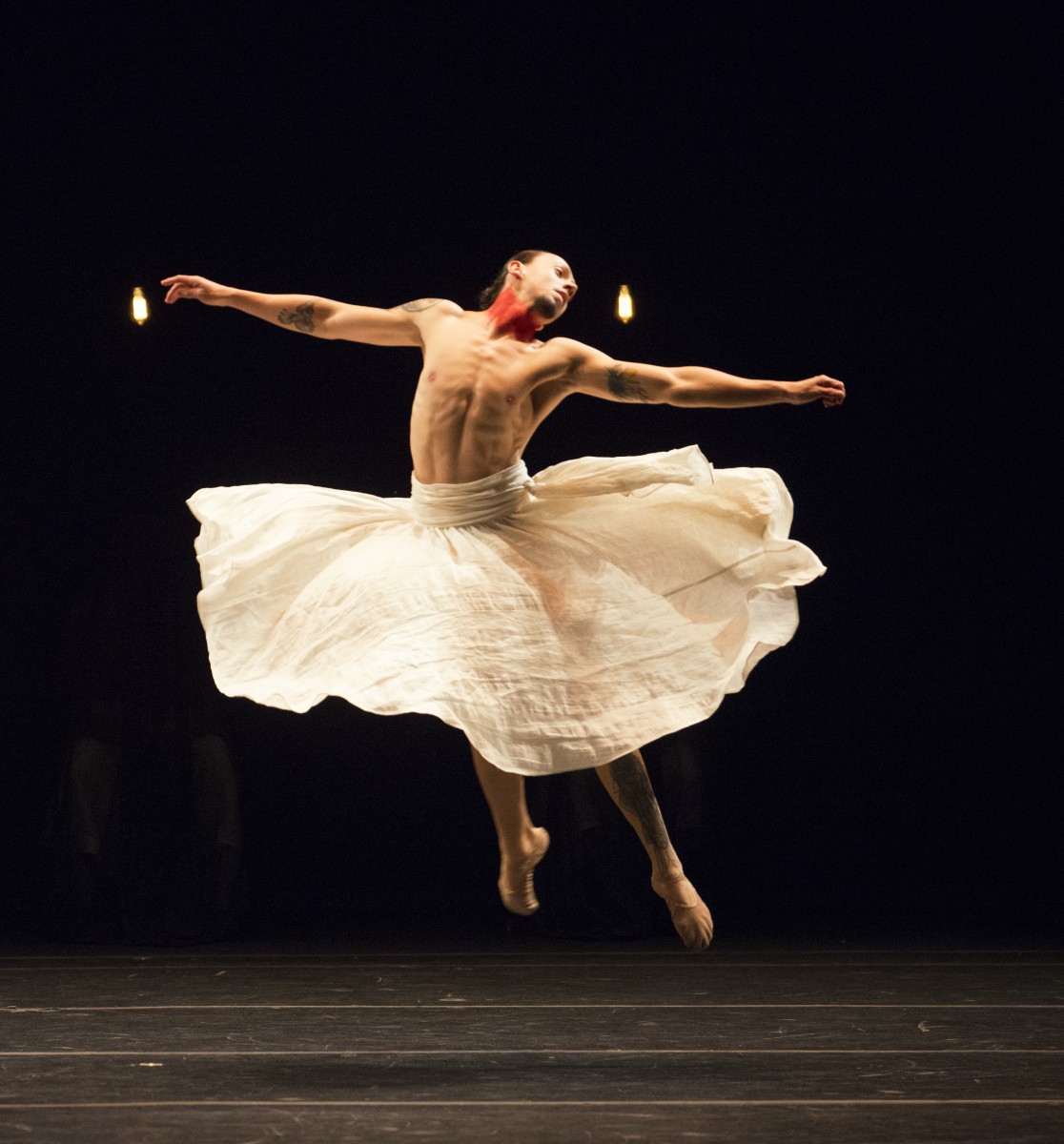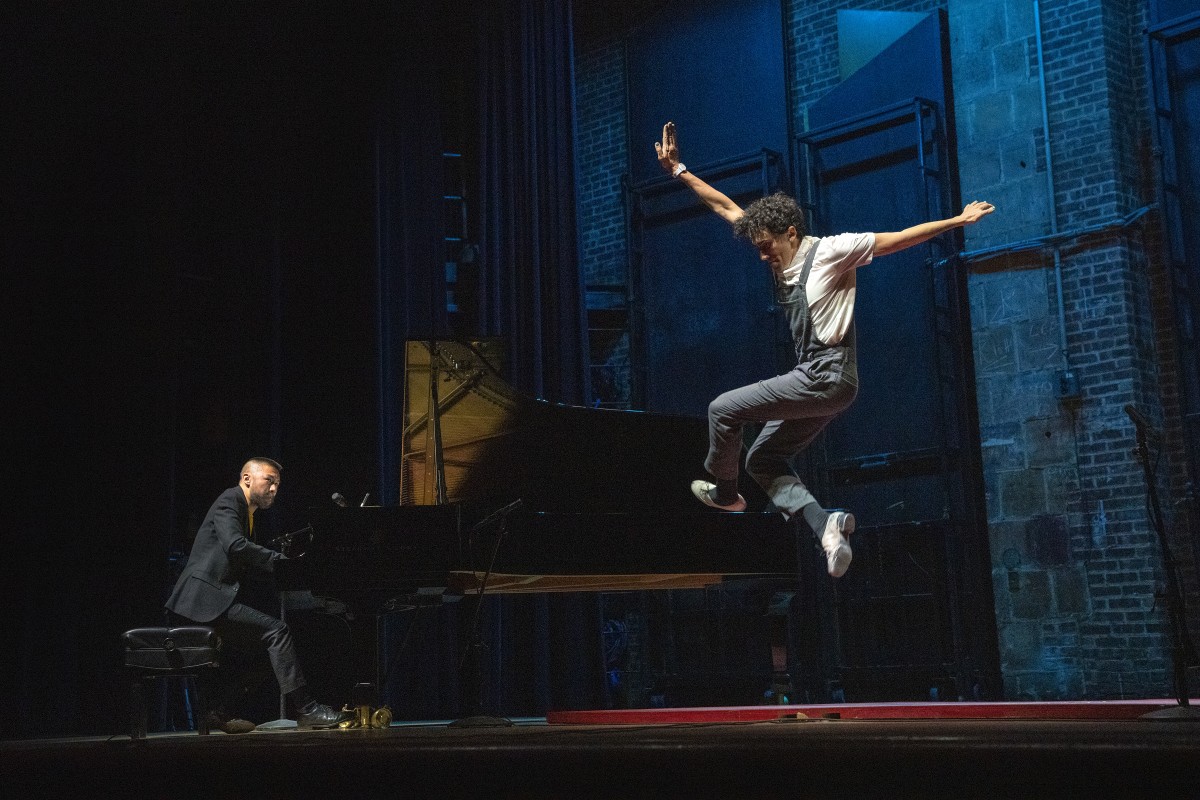
Grupo Corpo by Jose Luiz Pederneiras.
NYCC Artistic Director of Dance Stanford Makishi on Fall For Dance’s 20th Anniversary
In 2004 the New York City Center launched a festival that would bring the best in dance to a broader New York audience for the price of a movie ticket. Since then this beloved fall tradition has welcomed over 378,000 fans and is now a fixture on the New York dance scene.
This year as the festival celebrates its 20th anniversary season, En Face Magazine interviews Vice President and Artistic Director, Stanford Makishi.
Stanford shares with us how New York City Center works together to produce its complex programming, the passion that drives the festival, and what you can expect to see throughout the 23/24 season!
En Face: Hello Stanford! You have an extremely diverse background that includes graduating from Harvard University, dancing professionally, and various roles in performing arts organizations. Can you tell us a little more about your background and your path to becoming VP and Artistic Director of Dance for New York City Center?
Stanford: I realize that my path maybe doesn’t make a whole lot of sense because I’ve held a bunch of seemingly unrelated positions throughout my career. But the reality is that dance has been with me since my pre-teen years – in other words, for nearly half a century. It may not have been the central focus of my life and career that entire time, but it was always humming in the background at the very least, even when, for example, I was studying economics in college. I would say that everything that I’ve done up until this point has led to my current position as artistic director for dance at City Center. Harvard taught me how to think and write; having a career as a professional dancer gave me loads of perspective on dancers, choreographers, designers, composers, theatrical spaces, arts patrons, and cultures within and outside of the United States; and the various administrative roles I’ve had since then – and with them the artist relationships, connections with other administrators, and extraordinary mentorships – gave me the training, context, information, and networks that allow me to do my current job.
EF: This year marks 20 years of Fall For Dance. How did Fall For Dance come about and what was its driving mission?
SM: Fall for Dance was the brainchild of City Center’s previous President and CEO, Arlene Shuler, who sought to create a platform that would bring the very best dance from around the world to New York at an affordable ticket price. Clearly, she succeeded in spades.
EF: Presenting 5 programs with 15 participating companies and countless artists in a matter of weeks is truly a monumental feat – and that is what Fall For Dance does. Can you give our readers some insight into your process from research to performance and all that it entails?
SM: To give you the details of what it takes to put together Fall for Dance would require considerable time and explanation! There is also no blueprint for assembling the festival because we need to address a different set of concerns in an organic way each year, which makes answering your question even more complicated. I guess a short and incomplete answer is research and more research; constant engagement with artists and other members of the dance ecosystem; leaning heavily on an extremely supportive and talented City Center staff, and I mean everybody, for the entire year leading up to the festival; being in constant communication with our incomparable production team, who make everything look immaculate and beautiful; and tons of administrative work. I could focus on one area and give you a more interesting answer than this, but then I would feel bad about leaving out the contributions of the armies of individuals who bring the festival to life.
EF: What are some of the works that you are excited for New York audiences to see and why?
SM: It’s really difficult to identify specific works that excite me because I’m looking forward to having our audiences see all fifteen pieces on our stage! Ultimately, I hope our audiences will leave each show feeling excited about dance, with an appreciation for the extraordinary things that the festival artists are capable of. Our aim at Fall for Dance is to take our audiences on a journey of discovery, and it is my great hope that even the most seasoned of audience members will encounter a work or an artist that might be new to them. Amid the commissioned pieces, other premieres, and thrilling festival debuts are several returning artists, and I think it’s important to acknowledge that even these familiar voices continue to make us see the art of dance in new ways.
EF: One of the most incredible features of Fall For Dance is its incredible price point of just $20 dollars a ticket. Why is maintaining this price point so important to you and New York City Center and how do you make this possible?
SM: Maintaining the relatively affordable ticket price of $20 is important for all the obvious reasons: so that we can help remove the barrier of cost to many potential audience members, to get the public to consider Fall for Dance when they are deciding on how to spend their dollars, and to encourage consumers to experiment with artists – or even the art form of dance itself – that they may not usually pay to see. This is all possible with the support of extremely generous donors, who share our belief in the vision for our festival. Needless to say, they are an amazing group of individuals and institutions, and I am grateful every day that we have them in our world.
EF: You have been a part of Fall For Dance since 2011. What has it been like watching the festival bloom and what does the 20th anniversary mean to you?
SM: It goes without saying that I feel very fortunate to have been given the opportunity to help with the festival for so many years. I’m definitely filled with joy and thanks that artists, audiences, patrons, and many production and administrative staff have stuck with us for so long. Some might think that longevity comes with the challenge of keeping things fresh and interesting – but when the artists themselves are continually seeking to innovate and grow, our festival can innovate and grow with them. I feel very, very lucky to be a part of it all.
EF: Lastly, outside of Fall For Dance, NYCC hosts incredible dance all year long – including performances from our incredible partners! What else are you excited to present in the remainder of the 23/24 season?
SM: The rest of our season represents an embarrassment of riches: the masterpiece “Dance” by Lucinda Childs; the first time a contemporary masterpiece, Pam Tanowitz’s “Song of Songs,” will be performed in New York City; our annual Flamenco Festival, which will span two incredible weeks this season; the thrilling return to City Center of Netherlands Dance Theater; and “Message in a Bottle,” a dance theater piece set entirely to the music of Sting. We are proud to welcome back Alvin Ailey American Dance Theater, Dance Theatre of Harlem, the Martha Graham Dance Company, and Ballet Hispanico for their home seasons. We will also see the New York premiere of “Sugar Hill | The Ellington/Strayhorn Nutcracker” to kick off the winter holidays. So one might say that Fall for Dance is just the beginning of an entire season that will take our audiences to many magical places. That is, at least, my great hope.

Conrad Tao and Caleb Teicher by Richard Termine.
Fall For Dance Festival runs at New York City Center from September 27 through October 8. All performances are at 8 pm with a 3 pm performance Sunday October 8. More information and tickets here!
![]()


Follow Us
Subscribe For Updates & Giveaways!
Stay up to date with exciting original content, upcoming performances, and giveaways unique to your community and beyond!
